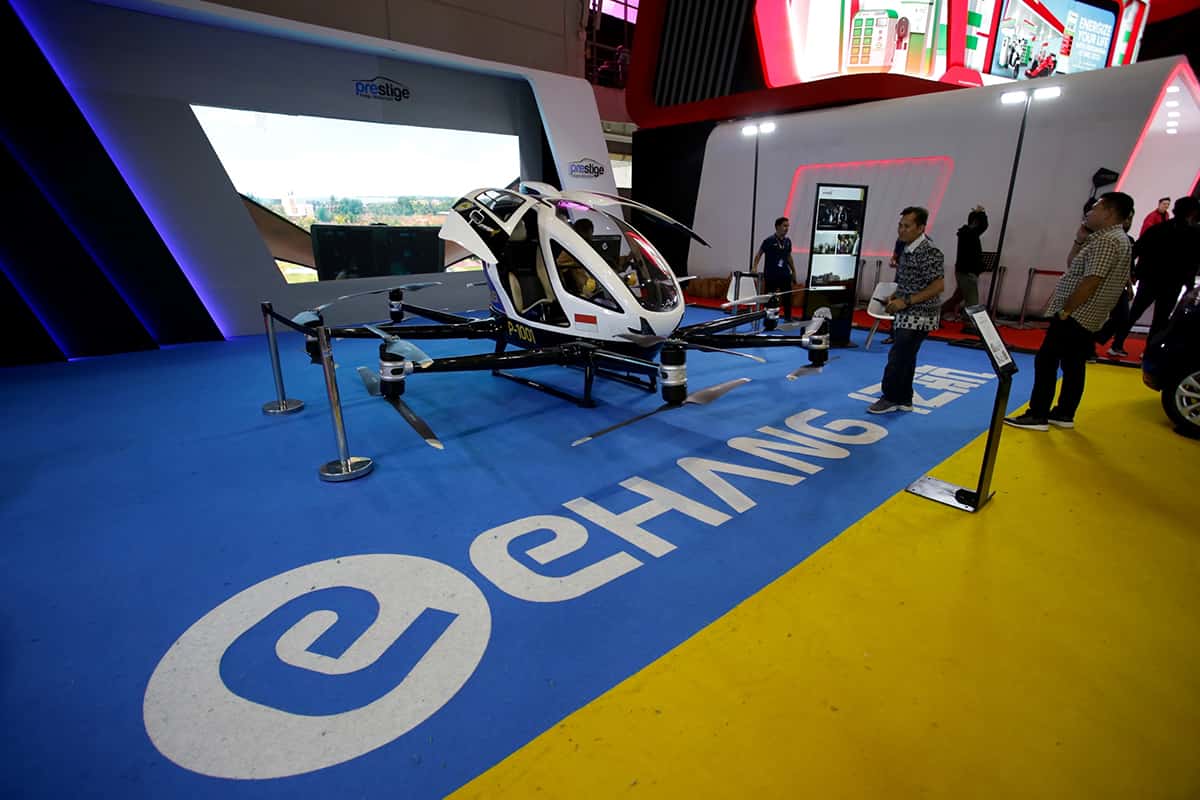Guangzhou-based EHang has received a license from China’s Aviation Authority to carry passengers on its aerial robotaxis. After a successful 2020 trial of its electric air vehicles in the US, this is the first commercial test of its E216-S driverless air taxi for the Nasdaq-listed company.
These eVTOLs—Electric Vertical Take-off and Landing aircraft—are battery-powered drones that could carry about two to four people, or 500–600 pounds, for short trips.
They look like helicopters, minus a pilot and a roaring engine, and can take off vertically from the middle of cities and fly for approximately 25 minutes at 62 mph. EHang plans to produce 120 vehicles within five years, with international pre-orders exceeding 1,200 units.
The concept of unmanned aircraft flight has been in the pipeline for about a hundred years—Henry Ford created a public transportation flying car in 1926. However, production never took off because of a test flight fatality.
The idea returned at the beginning of this century, with the effort intensifying in the past decade. “China was able to launch the first proper certification thanks to its leadership in the lithium-ion battery production, with 70% of the global share, but there is fierce competition coming from Europe and USA,” says Stefano Aversa, Managing Director and Vice Chairman at AlixPartners. “In the US, there are already trials to debut flying taxis in NYC, Los Angeles and San Francisco, while overseas main markets will initially be London, Paris and Monte Carlo. Besides the strict safety requirements, the main challenges for eVTOLs are regulation and acoustic pollution,” concludes Aversa.
With the market for air taxis expected to be worth tens of billions of dollars, several companies worldwide are also developing unmanned multi-copter aircraft. From large aviation firms like Airbus and Boeing to relatively new names like Beta Technologies, Blade Air Mobility, Joby Aviation, Archer Aviation in the US—and Vertical Aerospace, Lilium and Volocopter in Europe, many of whom have already gone public. The US Federal Aviation Administration’s first test approval could be as early as 2024.




